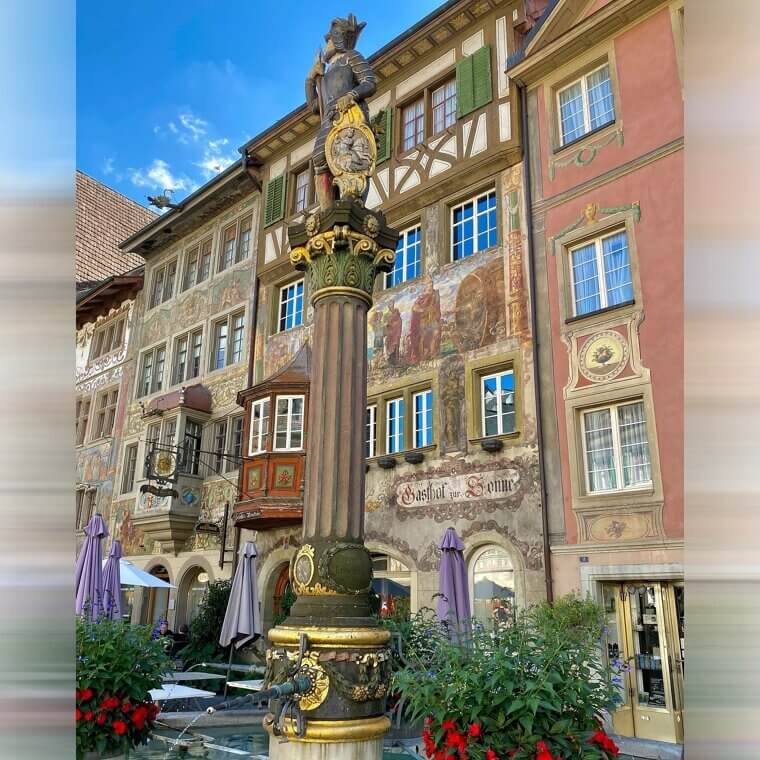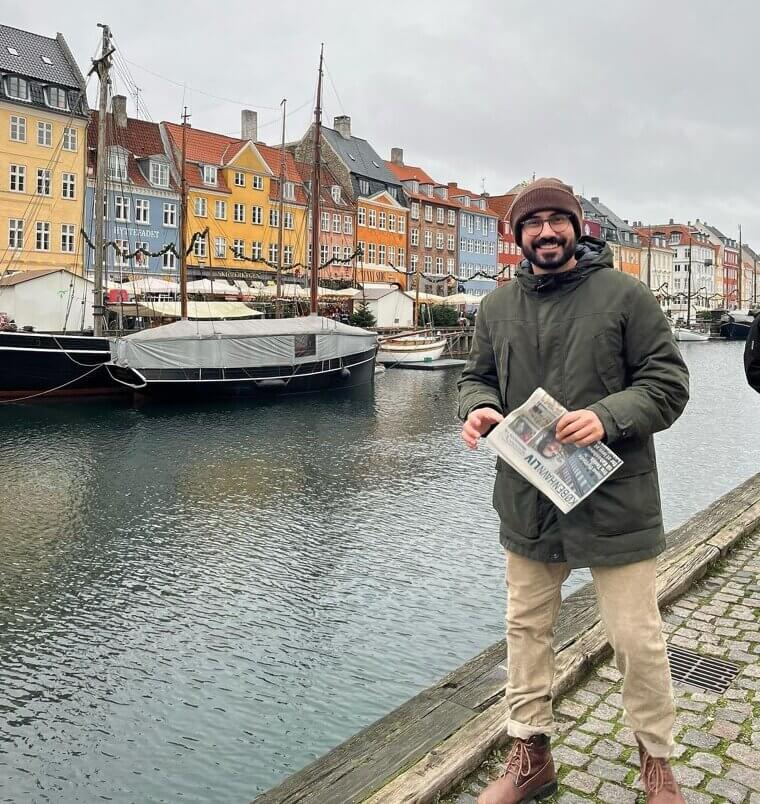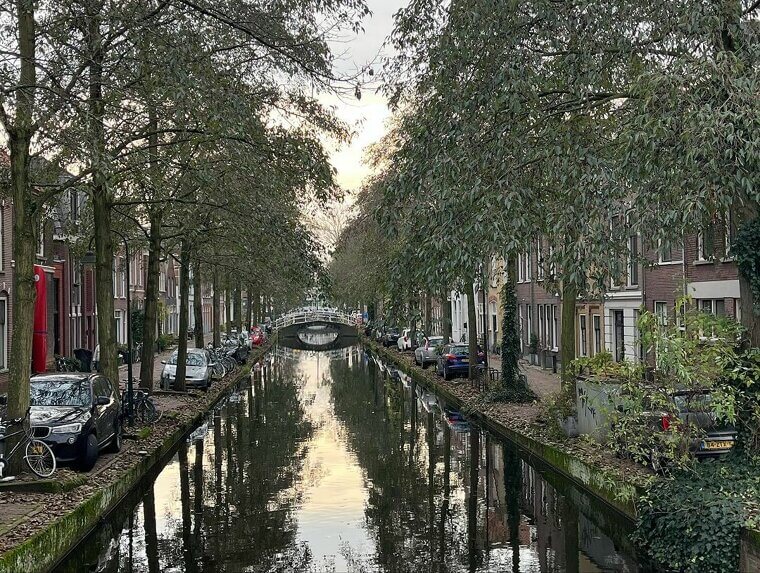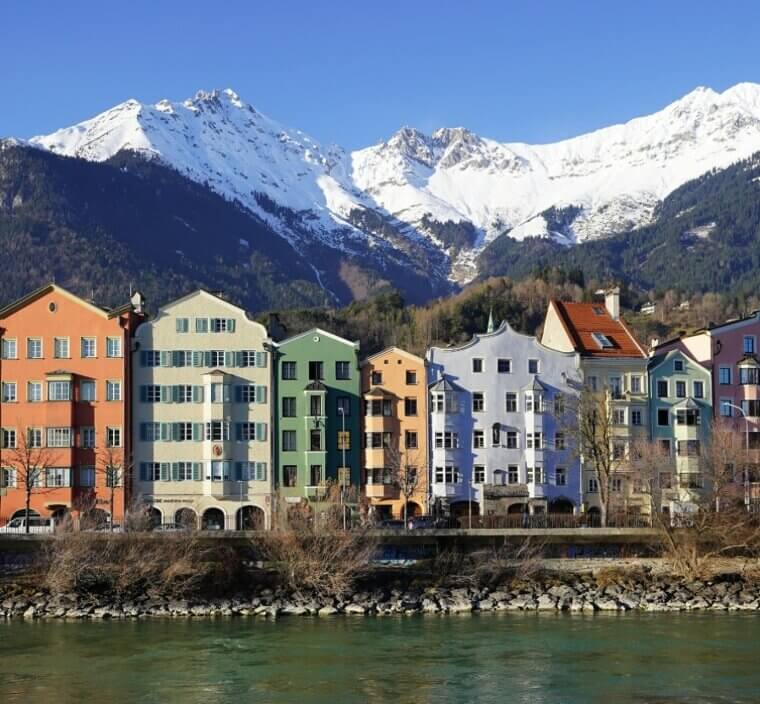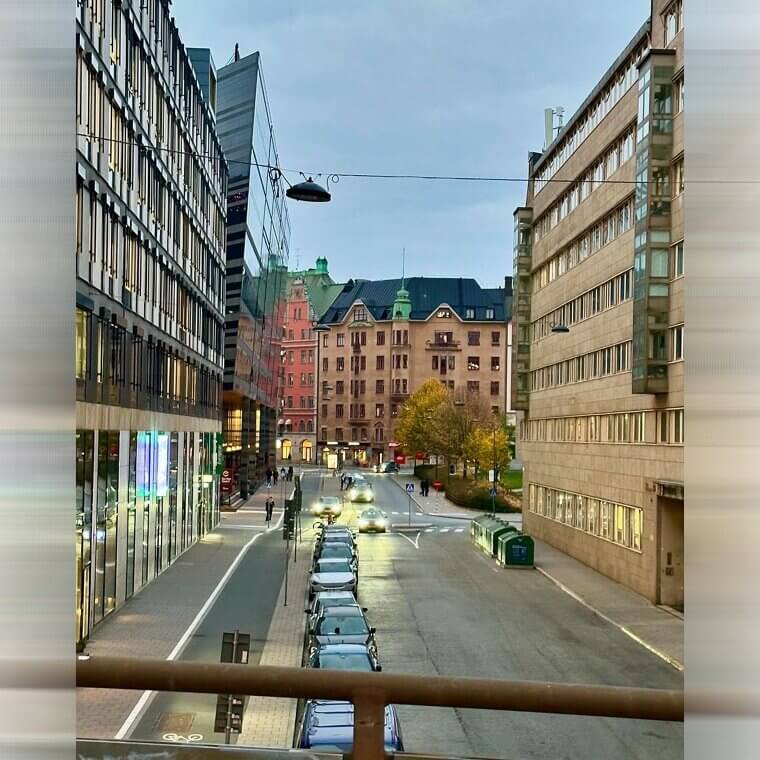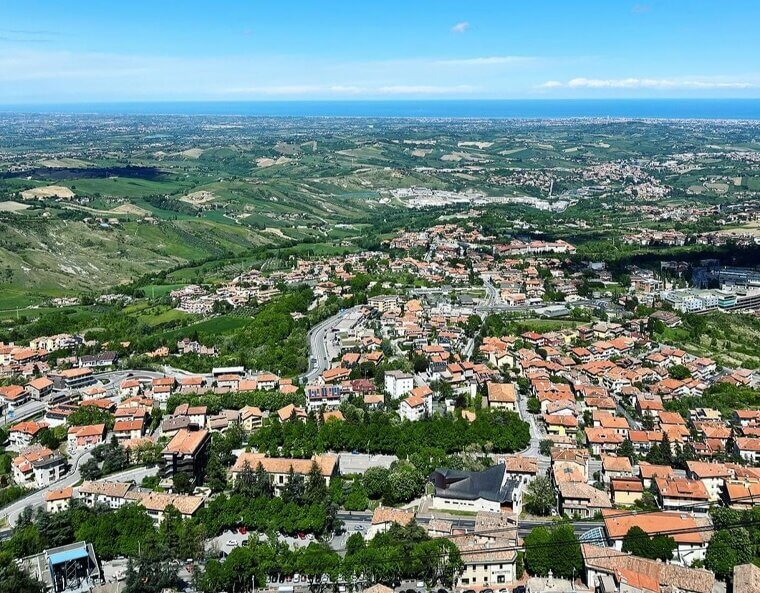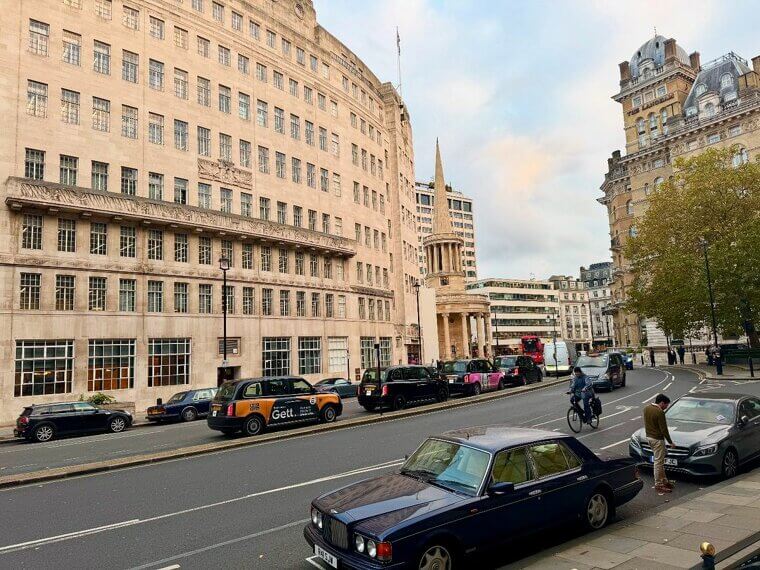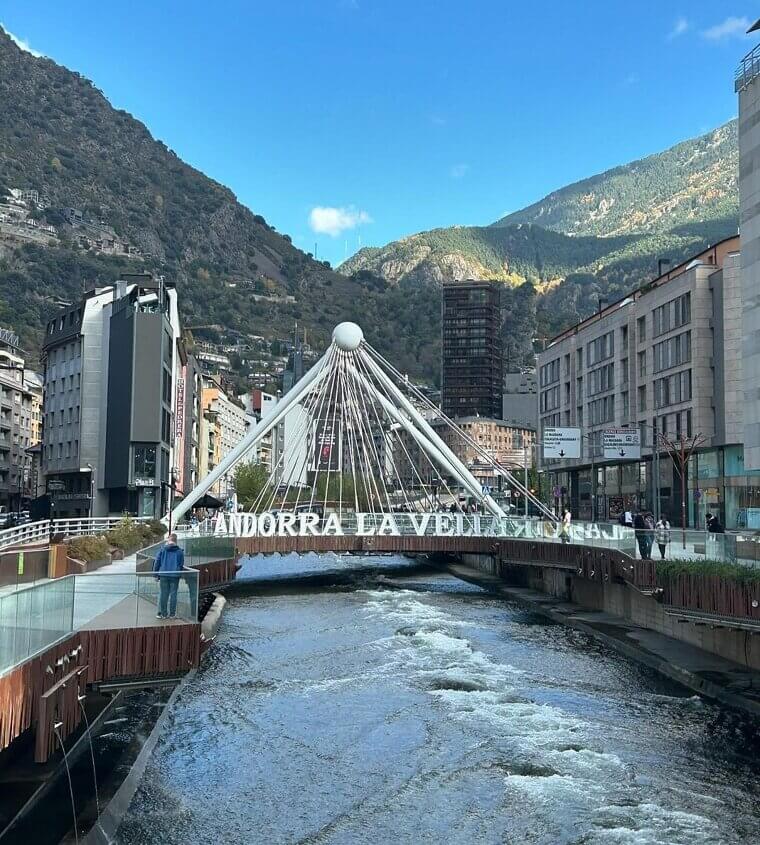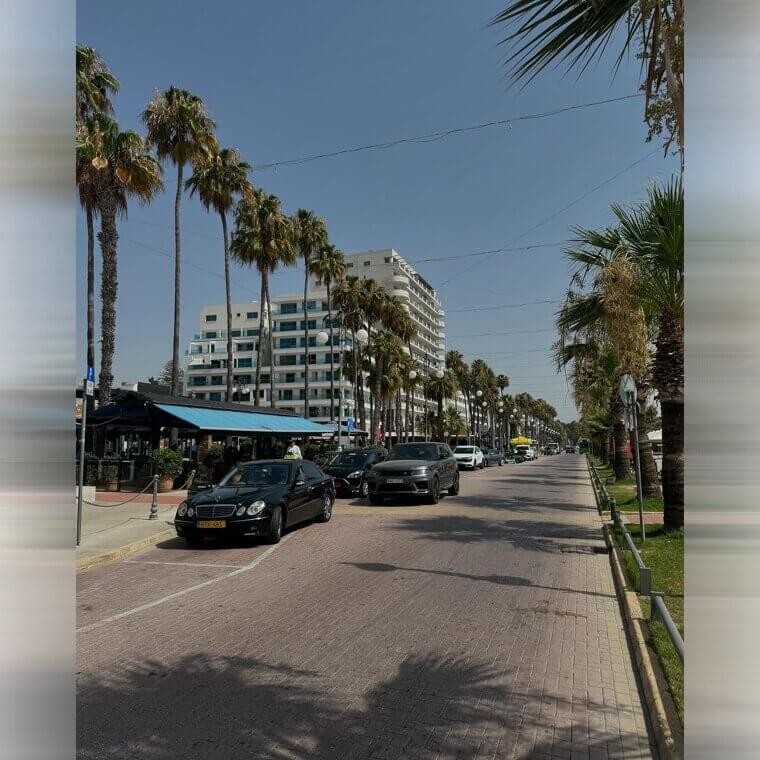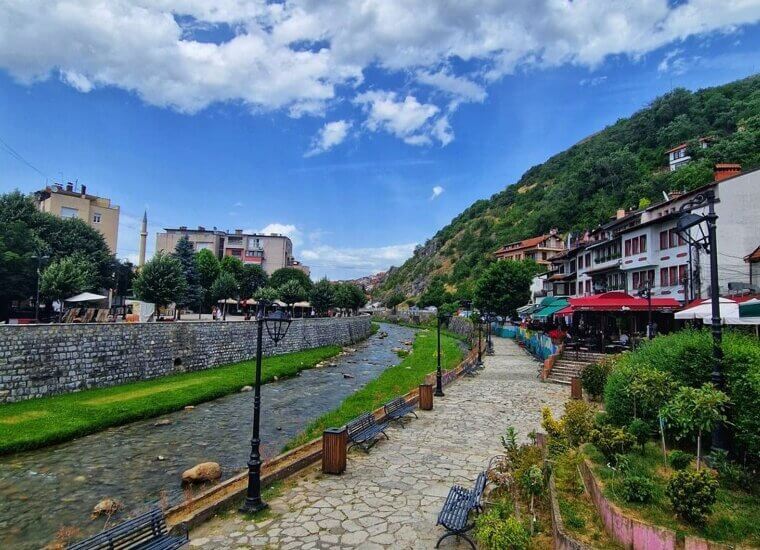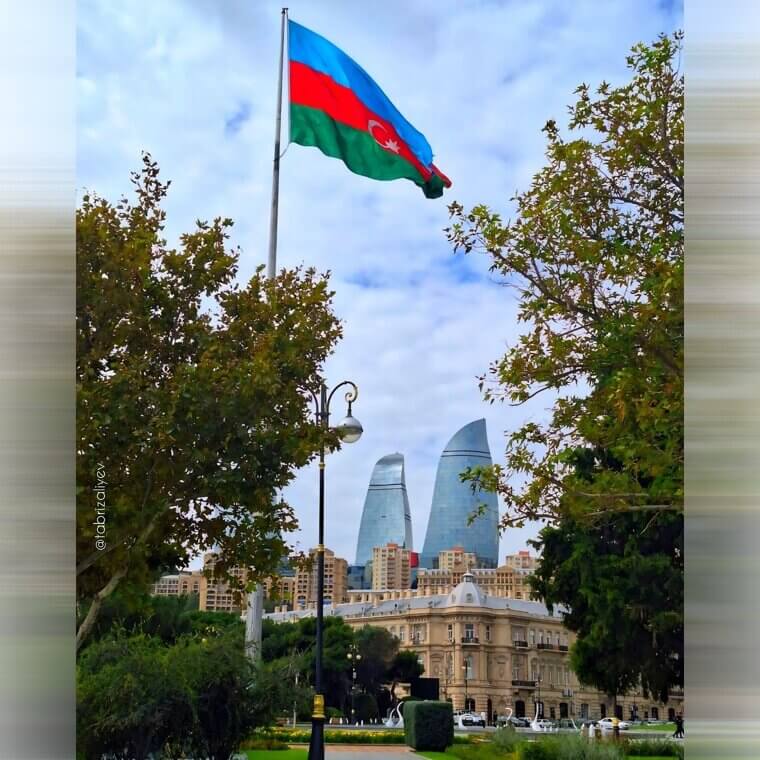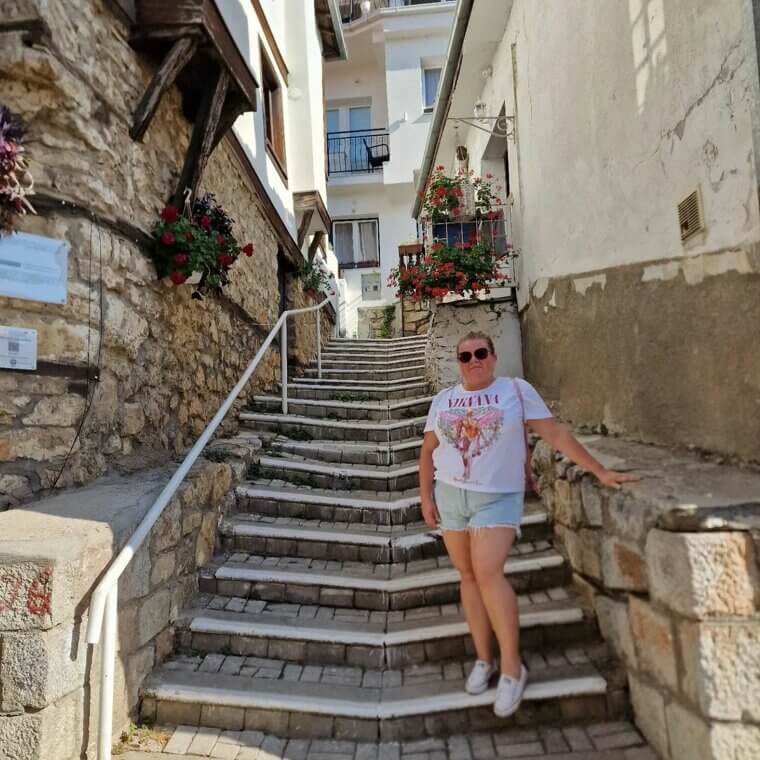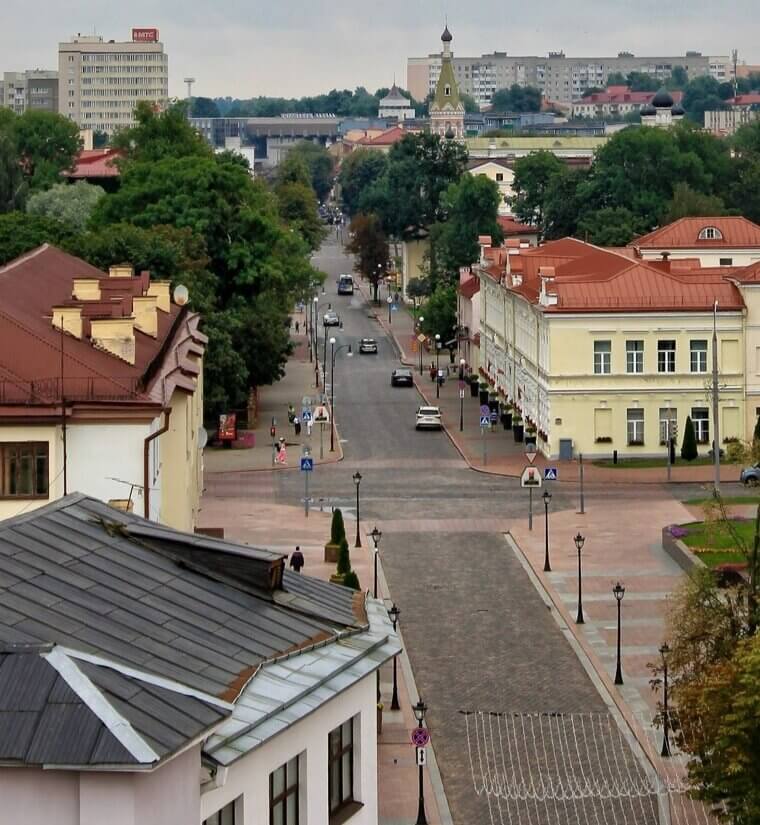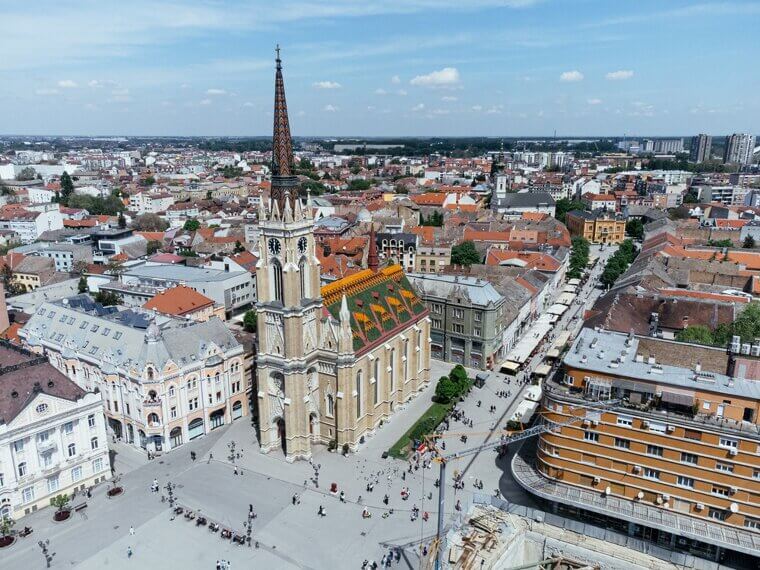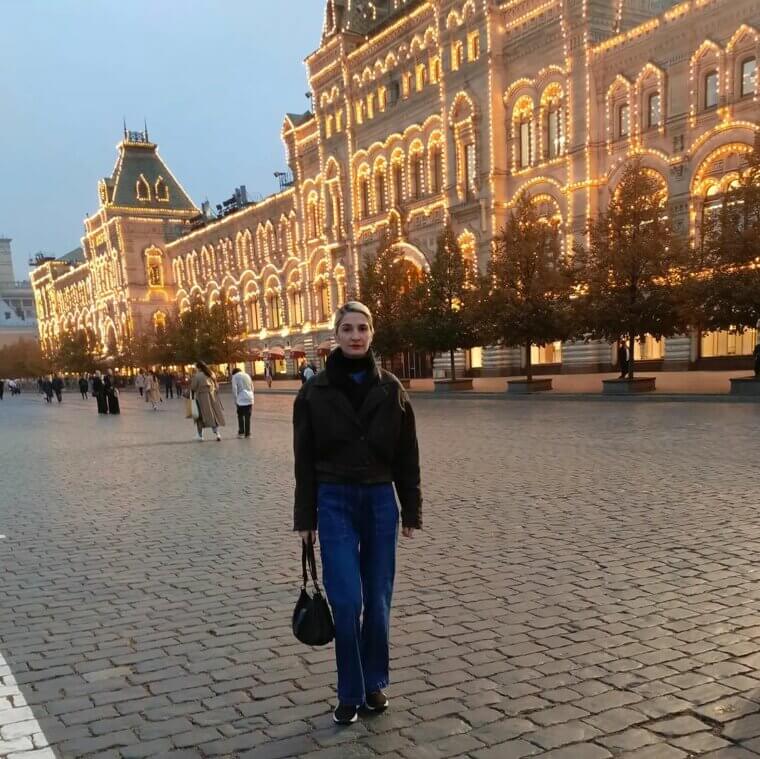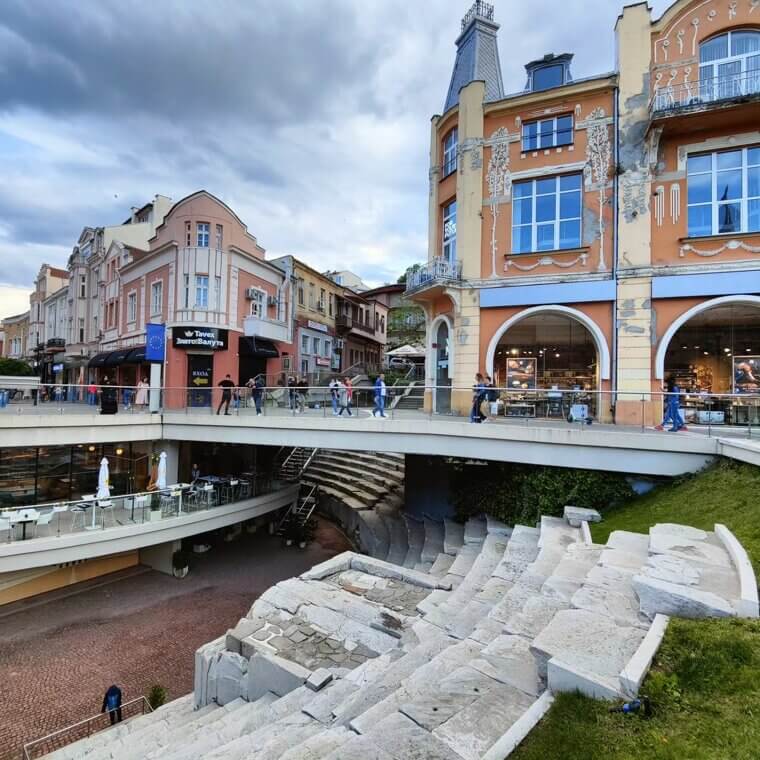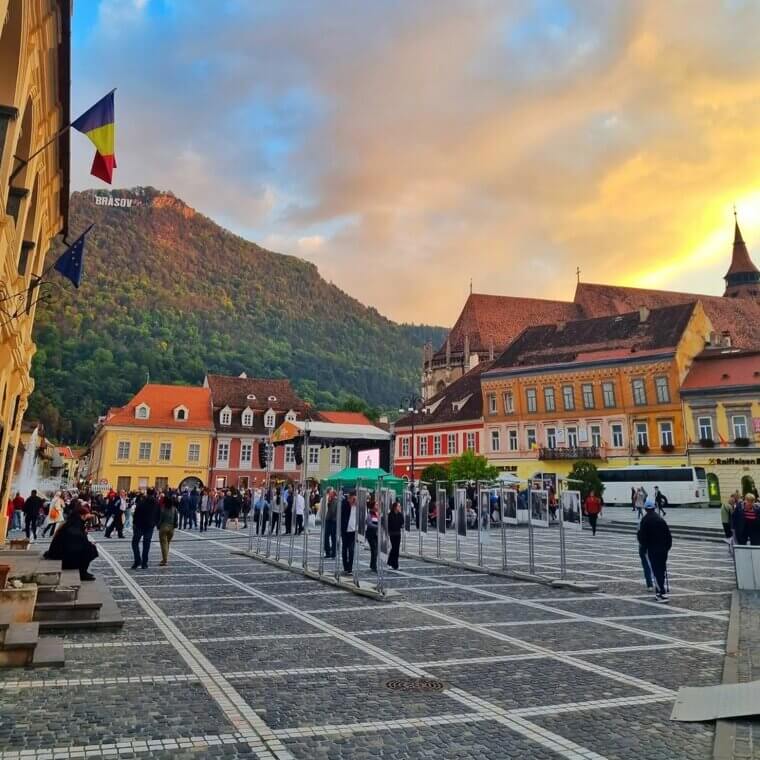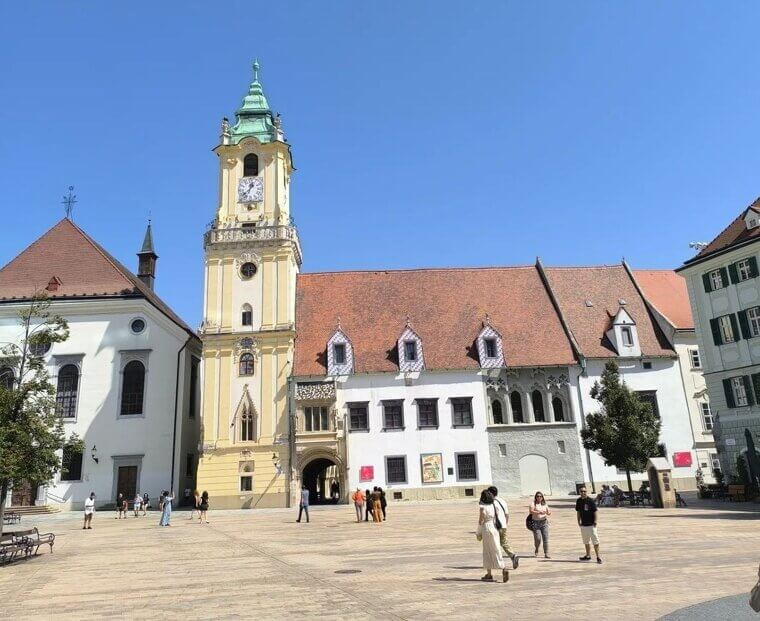Luxembourg (GDP per Capita: $128,259)
The richest country in Europe probably comes as a surprise to many readers. Far from being one of the most “popular” European countries, Luxembourg nevertheless boasts one of the strongest economies in the world. Indeed, following a recent estimate completed in 2023, Luxembourg is said to enjoy the highest per capita domestic product the world over. This is largely due to the country’s strong financial sector, as well as the relative stability of its government.
But what is it like to live in Luxembourg? Unsurprisingly, it’s pretty great! Luxembourg is one of the most desirable countries to live in, ranking consistently high in quality-of-life polls and indexes.
Ireland (GDP per Capita: $103,684)
Apart from the United Kingdom, Ireland is perhaps one of the most popular places for people from all over the world to visit. The country is defined primarily by its rich cultural traditions, but its economy is nothing to scoff at either. With a GDP per capita of $103,684, the country’s “free” economy maintains many strong financial and institutional strengths. As if that weren’t enough, the overall quality of living is very high, especially when compared to some of its immediate neighbors like the United Kingdom.
Of course, the experience of living in or visiting Ireland will be different for many, but the numbers don’t lie.
Switzerland (GDP per Capita: $99,994)
Many readers probably expected Switzerland to land much higher on this list. The country is famous for its high quality of living (in addition to cheese and chocolate, of course). It’s surprising, then, how wide the gap once was between this third spot and the second - in 2021, there was a difference of almost $50,000! Still, thanks to its strong service sector, Switzerland still ranks as having one of the strongest economies in the world.
Additionally, Switzerland's strong, varied export market contributes to its robust economy. Pharmaceuticals, chemicals, and good old-fashioned gems are the most popular exports, but the country’s industries are also strong.
Norway (GDP per Capita: $87,961)
Like Switzerland, Norway’s ranking on this list may come as a surprise to many. Indeed, the country is famous for its high standard of living, strong economy, and relative lack of crime and corruption. The country ranks consistently high in levels of public trust - it’s not uncommon for people to leave expensive items like laptops, headphones, and even pieces of jewelry unattended. Really, Norway has it all - the only downside is the extremely high cost of living. Safety comes at a steep price, it seems.
Other than that, many people who relocate to Norway are known to be much happier after doing so. The country’s strong economy and diverse culture are both major draws, and it welcomes plenty of new visitors every year.
Iceland (GDP per Capita: $78,811)
Don’t let the name fool you - Iceland is probably around 90% grass. Greenland, on the other hand, is covered in glaciers. Despite its confused name, there is nothing confusing about Iceland’s economy. While not the wealthiest country in Europe, Iceland boasts both strong fishing and tourism sectors, with the latter only recently overtaking the former. Like many other Nordic countries on this list, living in Iceland means enjoying a high standard of living and low crime rates.
Of course, all of this comes at a pretty high price, seeing as the majority of goods in Iceland are imported. Nevertheless, many will agree that making a trip to Iceland, even for a week, is well worth it.
Denmark (GDP per Capita: $67,967)
Denmark is one of the most popular countries to visit in Europe, and while it misses out on placing in the top 5 wealthiest countries, it absolutely floors all other contenders in an area that is perhaps more important: happiness. Indeed, Denmark is considered to be the happiest country in the world thanks to its emphasis on maintaining a healthy work-life balance. Despite this, its economy is nothing to scoff at either, and Denmark boasts a strong service industry which contributes to the overall high standard of living enjoyed by many Danes.
With low crime rates and well-developed social services, it’s no wonder that Denmark is so happy.
Netherlands (GDP per Capita: $62,536)
Closely following Denmark in terms of GDP per capita, the Netherlands is yet another strong, well-developed European country with a robust economy and high standard of living. Of course, this comes with a high cost of living as well, but most people will agree that the benefits far outweigh the downsides. People in the Netherlands enjoy universal healthcare along with a progressive tax system. The Netherlands is also a popular place for foreign expats, given that between 90% and 93% of the country is able to converse in English.
Of course, all of this is to say nothing of the excitement of the average Dutch lifestyle. While other countries enjoy a more laid-back approach, life can move pretty quickly in the Netherlands, especially in the capital of Amsterdam.
Austria (GDP per Capita: $56,505)
Austria is a small country in central Europe nestled in the Eastern Alps and bordered by Germany, Czechia, and Croatia. Surrounded by so many countries, how is it that Austria’s average GDP per capita beats them all out? It’s mostly due to its large services and industrial sectors; the country also boasts a small but highly developed agricultural industry. For many, though, it’s not the country’s economy that attracts them but its history.
Austria’s cultural identity is one of the most recognizable in the world. The country is famous for its classical and folk music traditions, baroque architecture, and Alpine traditions. Oh, and it’s also the birthplace of Sigmund Freud.
Sweden (GDP per Capita: $56,305)
Many people (us included) will probably be surprised at Sweden’s placement on this list. While it falls just short of penetrating the top 10 richest countries in Europe, make no mistake: Sweden is still a wealthy country to be contended with. The majority of its wealth comes from its liberal approach to doing business. As well, Sweden is mostly focused on exports - the country currently has a trade surplus, meaning the value of its exports is greater than that of its imports.
All of this makes for a relatively high standard of living for the average person in Sweden. Like others on this list, the country also boasts a fairly low crime rate, making it a safe place to live overall.
San Marino (GDP per Capita: $54,982)
The country of San Marino probably isn’t as popular as the California county of the same name. In fact, it’s one of the smallest countries, not only in Europe but in all the world as well, with a meagre population of just 34,000 citizens. Despite this, it is one of the richest countries in the world, ranking 4th out of all European countries and 17th internationally. The strength of its economy is mostly rooted in its tourism industry. Considered to be the oldest surviving republic in the world, it’s no wonder that people flock in droves just to see what all the hype is about.
And very few people come away disappointed. Not only is the country extremely wealthy, but many of its ancient cultural touchstones - (the glorious architecture!) - have survived across many centuries.
Finland (GDP per Capita: $53,755)
Located in the north of Europe, Finland is probably most famous for its Arctic Lapland province, consisting of numerous national parks and ski resorts across a vast wilderness. From here, travelers can catch a glimpse of the Northern Lights. And while its natural beauty is certainly the country’s biggest selling point, Finland’s economy is also quite robust. In terms of the wealthiest countries in Europe, it’s still far from the top spot, but in international terms it’s got plenty of other countries beat.
Still, the main reason to visit or relocate to Finland is definitely the country’s high standard of living and the strong sense of community its culture espouses.
Belgium (GDP per Capita: $53,475)
When Belgium is mentioned in discussions, the focus is generally on its remarkable sense of place and history. Indeed, many old medieval buildings are well-maintained, and it’s easy to get lost in the country’s gorgeous architectural trappings. Economic matters are normally kept out of the discussion but make no mistake: Belgium’s economy remains one of the healthiest in Europe. With a high focus on the services industry, the average person living in Belgium can enjoy a good standard of living.
However, while violent crime rates are relatively low, petty crime is far more frequent in Belgium than in some of the other countries mentioned on this list so far.
Germany (GDP per Capita: $52,745)
Germany is one of the largest countries in Europe and boasts an incredibly long, rich history as well as a thriving economy. While it’s not the wealthiest country in Europe, its GDP of 4.121 billion Euros makes it the third largest economy in the world behind the United States and China - this also makes it the largest economy in Europe. Besides this, Germany also has a robust welfare system and a strong focus on maintaining a healthy work-life balance.
Naturally, this makes it a pretty happy country to live in. Indeed, Germany sees plenty of visitors from all over the world every year, and it’s not uncommon for many of these visitors to lay down their roots here.
United Kingdom (GDP per Capita: $48,866)
If there was one word to describe the United Kingdom it would be “moderate” - moderate in manners, moderate in culture, and indeed moderate in economic matters as well. The United Kingdom is undeniably an attractive place to live, but as with France, the disparity between its poorer and richer areas is difficult to ignore. As it stands, the UK’s economy continues to grow at a - you guessed it - moderate pace and there are a few challenges that the country has yet to overcome.
Still, the United Kingdom is undoubtedly a fantastic country to visit if not live in. Its cultural identity is iconic, and many Brits would not trade it for anything.
Andorra (GDP per Capita: $46,544)
Andorra is a name that not many will recognize. It’s a small, independent principality situated between France and Spain. But what it lacks in size, it makes up for in the strength of its economy, which is primarily driven by trade, commerce, and tourism. It is, of course, a wealthy country, but Andorra is also famous for how little of its landmass is actually “developed.” Currently, only 4% of the territory has been built upon - the rest is dominated by mountains, valleys, and forests.
Indeed, while Andorra’s economy is certainly attractive, the main reason to visit is its natural beauty.
France (GDP per Capita: $44,460)
France is one of the most popular countries to visit in Europe due in no small part to its strong cultural identity and iconic landmarks. It’s easy to romanticize the country and get lost in the fantasy of living in France, but reality is an entirely separate thing. Indeed, while France’s economy remains relatively strong and the general standard of living is quite good, there is a lot more disparity between its poorer and richer areas. As well, while violent crimes are relatively rare, petty crime is much more common.
Still, who hasn’t fantasized about visiting France at some point in their lives? The country also boasts a robust free healthcare system and a rich culture - and who doesn’t want to sample some authentic French food?
Italy (GDP per Capita: $38,373)
In terms of cultural impact, Italy probably ranks as one of the highest countries in the world, next to a place like, say, France. This is the same country that gave us people like Leonardo Da Vinci and Michaelangelo and was the birthplace of the Renaissance and the Age of Humanism. Indeed, no one can take away Italy’s strong sense of cultural identity. When it comes to economic matters, though, the country ranks lower than some of its peers.
However, its economy is on the rise. After World War II, it was in shambles, but it turned around completely in under a century.
Malta (GDP per Capita: $37,882)
Malta is a gorgeous archipelago located in the central Mediterranean, between Sicily and the northernmost regions of Africa. It is a country steeped in history and culture—as such, economic matters tend not to come into the discussion until later. That being said, Malta's economy is ever-growing and ranked as “moderately free.” Also, the country is open to international trade, giving it a competitive edge—it probably won’t come as any surprise for the country’s ranking to improve in the near future.
However, some of Malta’s institutional foundations are still relatively weak when compared to other countries of similar wealth.
Cyprus (GDP per Capita: $34,701)
Cyprus almost does not qualify to be counted as a European country, given its proximity to West Asia. Located in the Mediterranean Sea, the country’s cultural identity is predominantly more Southeast European than Asian, though. It also boasts the third-largest population of any Mediterranean island, and its economy tends to reflect this. The standard of living in Cyprus is pretty high for the most part, and the country has become increasingly popular in recent years due to its relaxed tax laws.
The country is also known to be a relatively safe place to visit, and major crimes are infrequent.
Slovenia (GDP per Capita: 32,163)
Completing our list of the twenty wealthiest countries in Europe, Slovenia is a popular holiday destination thanks to its lavish ski resorts and gorgeous views. While its economy is certainly weaker than many others on this list, it maintains an above-average GDP as well as a respectable standard of living. Its greatest economic contributor is its emphasis on foreign trade, and the country is famous for its exports of motor vehicles, furniture, and pharmaceutical products.
Of course, when you’re surrounded by those Slovenian landscapes, economic matters tend to fade from the mind completely.
Ukraine (GDP per Capita: $5,181.36)
Ukraine is an Eastern European country that holds the honor of being the second largest country in Europe behind Russia, which borders it to the east and northeast. Although the country has a strong sense of history and cultural identity, it unfortunately is primarily distinguished as being the poorest country in Europe. This still makes it wealthier than many other countries internationally, but Ukraine's overall standard of living is much poorer than its European neighbors.
Despite this, the economy currently shows signs of growing. Indeed, the country saw its largest economic growth in the early 2000s and we can only hope that it will continue to rise.
Kosovo (GDP per Capita: $5,943)
Perhaps it is unfair to include Kosovo on this list, given that it is still listed as a developing country. However, by economic standards, the country remains much weaker than other European nations. Its primary economic contributor is the diaspora, which is caused by the export of services. Despite its limp economic standing, the Republic of Kosovo is a fiercely proud one and no one can take away its rich cultural heritage.
Additionally, perhaps due to its lack of wealth overall, visiting or relocating to Kosovo is pretty cheap, especially in comparison to other European countries. It also benefits from its close proximity to Romania, Bulgaria, and Greece.
Moldova (GDP per Capita: $6,650)
Despite its ranking as one of the poorest countries in Europe on this list, Moldova is by no means an unpopular travel destination. Far from it, in fact. The country is famous for its wide and varied terrain, which includes forests, rocky hills, and vineyards. The country is also home to some of the world’s largest wine cellars, making it a popular destination for wine connoisseurs. And while its economy remains relatively weak in comparison to other countries, it is still constantly growing and may emerge someday as one of the strongest.
Additionally, Moldova’s cultural identity is definitely strong, and much of the country’s architecture is Soviet in style, reflecting Moldova’s recent past.
Azerbaijan (GDP per Capita: $7,155)
While Azerbaijan ranks pretty low in terms of wealth, it probably ranks towards the upper end of the scale when it comes to culture. Formerly a Soviet republic, Azerbaijan and its capital, Baku, are famous for their strong sense of place. The country’s Inner City is home to the Palace of the Shirvanshahs, a royal redoubt dating all the way back to the 15th century—and it still stands as strong today as it did back then.
Economically speaking, Azerbaijan is heavily reliant on oil and gas exports. On the whole, the country boasts a middle-upper economic standing with high levels of literacy all around.
Georgia (GDP per Capita: $8,120)
Like many other Eastern European countries, Georgia occupies that nebulous zone between Europe and Asia where the international borders become much harder to pinpoint. The country shares its cultural identity with aspects of both continents and is perhaps what it is best known for. Its most famous site is Vardzia, a monastery located within a sprawling cave network that dates all the way back to the 12th century. The country’s capital, Tbilisi, is also well-known the world over for its maze-like streets and gorgeous architecture.
Georgia is currently listed as a developing country, enjoying an emerging market economy as well as a high Human Development Index. It is perhaps mostly reliant on its agricultural products such as wine, nuts, and fruit.
North Macedonia (GDP per Capita: $8,146)
North Macedonia is far from being one of the most popular countries to visit in Europe. It’s a relatively quiet place despite its close proximity to Greece, which is arguably one of Europe’s most famous countries. North Macedonia’s recent economic efforts have seen it manage to turn some of its fortunes around. Despite this, there’s still some more room for growth, and the overall standard of living has yet to improve for everyone.
Still, given its location and incredible views—not to mention its great healthcare and excellent schooling opportunities—North Macedonia is a great place for any expat to visit.
Albania (GDP per Capita: $8,367)
Albania is a small country located on the Balkan Peninsula of Southeastern Europe. It’s home to many archaeological sites and castles dating back to ancient history. The country’s capital, Tirana, is home to the Natural History Museum, which includes displays dating all the way back to antiquity and some as recent as the post-Communist era. But what of the country’s economic standing? How well does it compare to other European nations?
The country’s economic rating is described as “economically free.” It is based primarily on the service industry, supported in smaller parts by agricultural and industrial sectors.
Bosnia and Herzegovina (GDP per Capita: $8,426)
We know what you’re thinking—how could we possibly rank two countries as one economic whole? The funny thing is that, despite its name, Bosnia and Herzegovina is actually one national entity. Like Albania, Bosnia and Herzegovina is located on the Balkan Peninsula, and its countryside is primarily dominated by rivers, lakes, and medieval villages. Its capital, Sarajevo, has a well-maintained old quarter, a site infamous for the assassination of Archduke Franz Ferdinand.
But that’s the past - what of the present? In terms of European countries, Bosnia and Herzegovina rank much lower, but their GDP is still higher than the international average.
Armenia (GDP per Capita: $8,715)
Armenia’s placement on this list may be seen as controversial by some - technically speaking, Armenia is actually part of Asia. However, its cultural identity is predominantly European, and given its close proximity to Turkey, we’ve decided to include it on our list after all. Despite its relatively weak standing in comparison to other European Economic Communities, Armenia recently enjoyed some rapid economic growth as recently as 2023, becoming the fastest-growing country in Eastern Europe.
That being said, 24.8% of Armenia’s citizens currently live below the poverty line. Despite this, the crime rate of Armenia is surprisingly low, and the country is considered to be one of the safest in the world.
Belarus (GDP per Capita: $7,829)
At least two-fifths of Belarus, sharing a border with Russia, Poland, Ukraine, and Lithuania, is covered in dense forests. Naturally, this ranks pretty high in terms of natural beauty. The forests are also integral to the country’s economy, being the primary source of wood and paper goods. Given its emphasis on full employment and its robust public service sector, the country is often described as a welfare or socialist state.
The main source of income in Belarus is mining and manufacturing. The processing of raw materials accounts for the majority of the country’s overall economic strength.
Serbia (GDP per Capita: $11,360)
Serbia is located at the crossroads between Central and Southeastern Europe. Most people love it because of its culture and their national identity reflects that well, with a diverse array of influences. Like many other European countries, it ranks much higher than the global average in terms of wealth but fares slightly lower on a regional basis. Its economy is described as “moderately free” and is primarily reliant on manufacturing and exports.
Living in Serbia is much cheaper than many other Eastern European countries - despite this, roughly 7% of the country’s population lives under conditions of absolute poverty.
Montenegro (GDP per Capita: $12,016)
Montenegro is located in the Balkans and is largely defined by its gorgeous mountains, stunning medieval villages, and narrow strip of beaches along its coastline. The country’s natural beauty makes up for what it lacks in terms of economic stability in spades. As if to reflect this statement, most of the country’s economy is reliant on the tourism sector—the country plays host to millions of visitors and tourists every year.
Despite Montenegro’s relatively low standard of living compared to other European countries, violent crime is rare, making it one of the safest places to live in Europe.
Turkey (GDP per Capita: $12,985)
Like some of the other countries on this list, Turkey occupies that grey, nebulous zone between Europe and Asia. Despite high levels of inflation, Turkey ranks high in terms of wealth on a global scale. Its largest sector by far is the service industry, followed by the industrial and agricultural sectors in that order. But the average person living in Turkey is actually on the poor side of the scale.
Living in Turkey costs much less than in many other European countries, and the country generally readily welcomes foreigners looking to move there.
Kazakhstan (GDP per Capita: $13,136)
Despite the antics (or perhaps, because of them) of a certain mustached Kazakhstani journalist, the nation of Kazakhstan is in a much better place now than it ever has been. Indeed, the country’s tourism industry experienced a significant boom following the release of Borat back in the early 2000s. Now, alongside its strong export industry, the tourism industry in Kazakhstan can account for much of the country’s newfound wealth.
While Borat may not have represented the country as fairly as it should have, there is no denying that Kazakhstan is a beautiful place to visit. Indeed, it’s also considered to be the richest country in Central Asia.
Russia (GDP per Capita: $13,817)
Russia is considered to be one of the world’s major superpowers, but despite its current notoriety, the country has a long, rich history, and it’s no wonder that many Russians are so fiercely patriotic. Russian architecture is some of the most elaborate in the world, and it only takes one trip to St. Petersburg to confirm this. But shockingly, despite being a "superpower," the country's population, in general, is actually pretty poor.
Economically speaking, Russia is primarily reliant on the export of natural resources, particularly with regard to energy. It’s currently one of the world’s largest producers of oil and natural gas.
Bulgaria (GDP per Capita: $15,797)
Like Montenegro, Bulgaria is located in the Balkans region of Europe. Its terrain and culture are diverse, drawing influence from Greece, Persia, and the Ottoman Empire. Indeed, the primary reason most people visit Bulgaria is to experience its rich culture first-hand, and the country is famous for its traditional dances, music, and arts and crafts. While its economy is far from being the strongest in Europe, it recently enjoyed some growth.
The country is primarily reliant on the agricultural and industrial sectors but is also supported by the information technology industry.
Romania (GDP per Capita: $18,419)
Much of Romania’s reputation stems from its central role in a certain bit of popular fiction. Indeed, the country is well-known for its long-standing medieval castles and old villages. Its most iconic landmark is Bran Castle, which has long been associated with the legend of Dracula. Of course, vampires and other creatures of legend are all well and good, but what’s the economy like in Romania? Well, it’s complex but fairly strong overall, ranking high in global terms.
The country’s main source of income is the exporting of motor vehicles, and is in fact the largest producer of vehicles in all of Eastern Europe. Other dominant industries include mining and agriculture.
Greece (GDP per Capita: $22,990)
Greece is one of Europe’s most popular tourist destinations, and for good reason, too: the country is home to some of the most stunning views in the world. Famous for its beaches, architecture, and colorful history full of gods and monsters, Greece’s economy is also nothing to scoff at. While it ranks lower in a strictly European sense, globally speaking, it’s one of the better-developed countries, and its post-pandemic recovery was nothing short of fantastic.
But who cares about economic matters when you’re visiting Greece? With so many ancient sites to explore and iconic landmarks to visit, money is probably the last thing on anyone’s mind.
Latvia (GDP per Capita: $23,184)
Latvia is famous for its natural beauty, encompassing wide beaches and sprawling forests. In fact, it's considered a great place to visit if you're in a group who wants various tourist attractions. The country also boasts incredible medieval architecture, particularly within its capital, Riga. However, despite the country’s stunning views, its economy is much more imbalanced than many other European countries on this list, with vast disparities between its rich and poor citizens.
Latvia’s largest export is processed foods, which account for the country's main source of income. The country also exports motor vehicles, pharmaceuticals, and electronics.
Slovakia (GDP per Capita: $24,470)
Slovakia is a landlocked country that shares its borders with Poland, Ukraine, and Hungary, alongside a few others. Its culture, therefore, reflects this geographic centrality and the country boasts a relatively high standard of living (hence its placement at the very end of the poorest countries in Europe). Despite the high standard of living in the country, the citizens and residents are relatively low-income earners when compared to the global scale.
Slovakia’s chief exports include motor vehicles, machinery, electronics, ceramics, and textiles, while the country’s service industry accounts for roughly 69% of its income.



